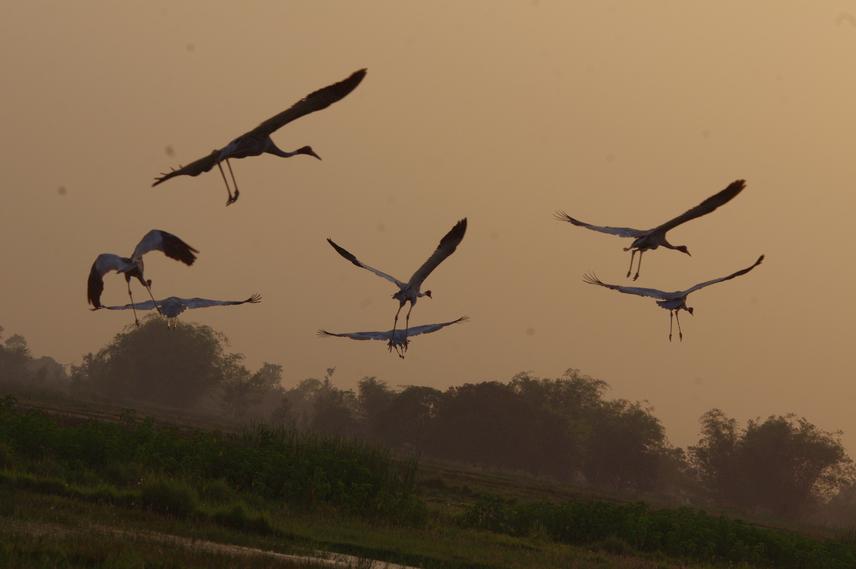Binaya Joshi
This study aims to investigate:
1). Behavioral ecology of sarus crane (foraging, breeding and home range),
2). Habitat ecology (habitat availability and the effect of climate change);
3). Sarus-human interactions (effect of agriculture on their habitat quality).

Human activities and climate change are known to have a major impact on biodiversity and ecosystem functions worldwide. Effective conservation to reduce the species declines requires ecological knowledge of the target species as well as effects influencing their ecological and behavioural aspects. Nepal is one of the world’s 35 biodiversity hotspot and has attracted international conservation efforts. However, so far most conservation effort has been given to Nepal’s forest and alpine ecosystems that host its flagship mammal species such as tiger, rhino and snow leopard. Other ecosystems, such as wetland with its rich avian fauna, are also subject to negative impact of human activities but receive little attention.
Sarus crane (Grus antigone), a non-migratory wetland crane species only found in Southeast Asia and Australia is listed as a vulnerable species by IUCN Red data list. The wetlands in Nepal provide the important habitats for the Indian subspecies (Grus antigone antigone). Much of their wetland habitats have been modified by human into farmland and the population of sarus crane are known to have declined. Despite being a threatened species, very little ecological information is available for effective conservation management of this endangered wetland species.
This study aims to investigate:
1) Behavioural ecology of sarus crane (foraging, breeding and home range)
2) Habitat ecology (habitat availability and the effect of climate change)
3) Sarus-human interactions (effect of agriculture on their habitat quality).
The research will be conducted in natural sites and agricultural areas that used by sarus crane in order to assess the effect of human activities on the ecology and behaviour of sarus crane and will provide important information for conservation of this species as well as wetland ecosystems in Nepal.